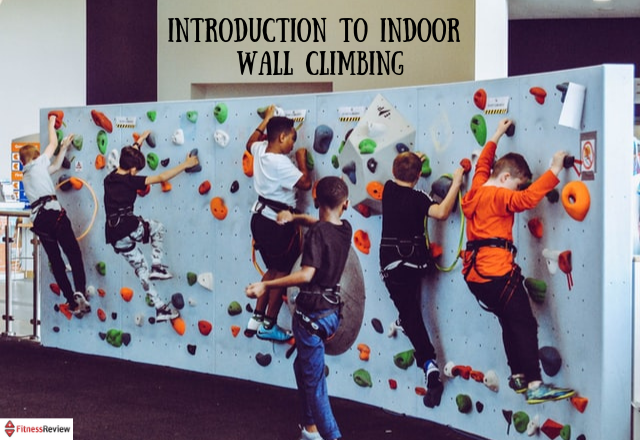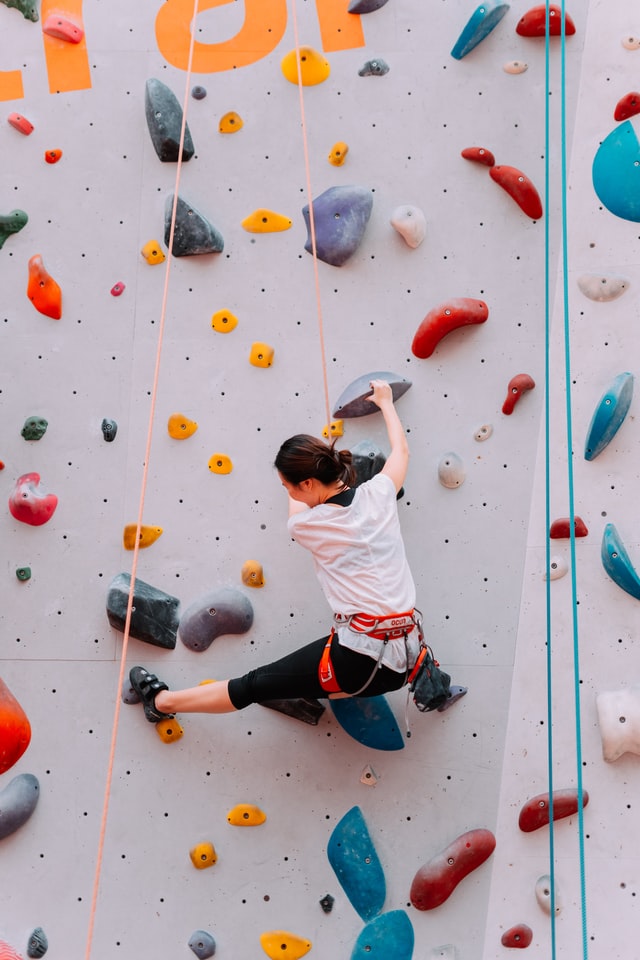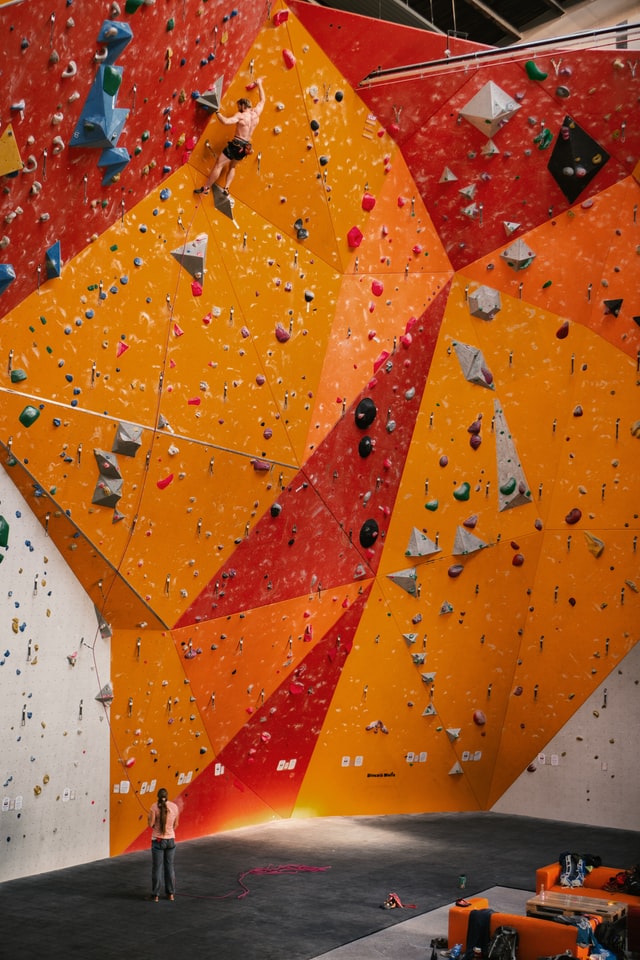Introduction to Indoor Rock Climbing

Wall Climbing is Booming: Here is How it Works and How You Can Get Involved
Climbing has made the shift from outdoors-only become an indoor activity recently. The boom in artificial climbing walls has seen a massive surge of both availability and interest in this sport.
More people than ever before can enjoy the challenges of rock climbing and the adventure that it brings.
This introduction starts by looking at the distinct types of indoor climbing you can enjoy. Next, there’s a beginner’s guide to training for the sport. The introduction ends with a look at the careers of some of the most famous rock climbers in the world.
Different Types of Indoor Wall Climbing
It’s easy to assume that there is just one form of indoor rock climbing. However, there are several different ways you can take part. Here’s a look at four of the most popular:
Indoor Climbing – Top Roping:
This is a form of indoor climbing where the climbing rope is set up and in place as you make the ascent. The rope is threaded through the anchor at the top. Climbers tie in to the rope at one end, while the belayer (in rock climbing, the person controlling the other end of the rope is called the belayer) manages the other end of the rope.
In most cases, the belayer will be at ground level when indoor rock climbing. But in the strictest sense of the title, the belayer would be at the top of the wall.
Lead Climbing:
This is a more advanced form of indoor climbing which sees the climber manage the rope themselves. This time, the rope is not already anchored like in Top Roping. They will clip the rope as they move up. The climber uses quickdraws (these are specialised snap gate clips) several times as they climb.
In lead climbing, there is still a belayer. They work in a different way, ensuring the climber has enough rope to ascend safely, but not too much rope in case they fall.

Speed Climbing:
In speed climbing it’s not just about making that climb, it’s more about how fast they can make the top. If you’ve seen speed climbing on TV or in person, it’s a fascinating and high energy sport to view.
Indoor Dry Tooling:
If you climb outdoors, you’d traditionally use crampons, ice axes and rock shoes. The indoor version is an adapted one. With equipment such a specialised indoor ice axe with rubber loops instead of the sharp pick you’d usually see.
Training for Indoor Rock Climbing
There are many different ways you can train for rock climbing. Top coaches specialise – bringing their individual approaches to the sport. Here’s a list of the most popular pieces of advice:
- Warming Up: Just like any other sport, you’ll have to warm up to be at your best. Stretching and warming up will have your joints and muscles ready for the challenge. A warm up of half an hour is recommended for peak performance.
- Improve your Balance: Your sense of balance is all-important in indoor rock climbing. A good exercise is to find a steep slab and traverse it with only your feet, using your hands for balance only when you need to. Keeping your body close to the wall is advised when climbing.
- Learn to Fall: While you might consider that not falling is the way to go in climbing, it can be a great idea to get comfortable when falling. Every climber will fall at some point, so it is good to practise it. Find a safe spot and take a deliberate fall. This will give your more confidence that falling is not a bad thing, which in turn gives you more confidence as you climb.
- Previewing the Route: Before you climb, visualise exactly how you are going to tackle it. With a plan in place, the climb will seem that much easier and controlled.

Famous Rock Climbers for Inspiration
Here are four of the most famous rock climbers in the world:
Adam Ondra: Born in the Czech Republic, Ondra is known for his almost zen-like control when he climbs. While the heart rate of other climbers increases during an ascent, Ondra’s actually decreases. His speciality is bouldering.
Alex Honnold: This free solo and speed climber from California, he made the first free solo ascent of El Capitan in 2017. Honnold has stated, ‘I don’t actually climb fast, I just don’t get tired and slow down.’
Ashima Shiraishi: Shiraishi climbs with a dynamic agility, which might have come from practising on boulders in Central Park at the age of seven. The youngest ever to complete a Grade A route in 2015, she attacks climbs with a sense of fun.
Alain Robert: Known as an Urban free solo climber, Robert is famed for his ascent of the Burj Khalifa (the World’s tallest building) in 2011. With a nickname of ‘Spiderman’ he is also famous for his sometimes-illegal rope-free climbs.
More Popular Pages this Month: